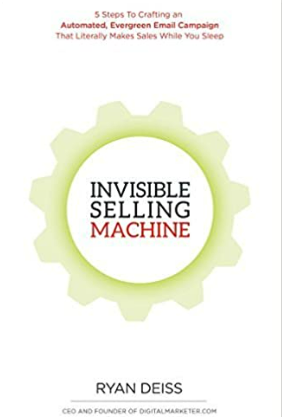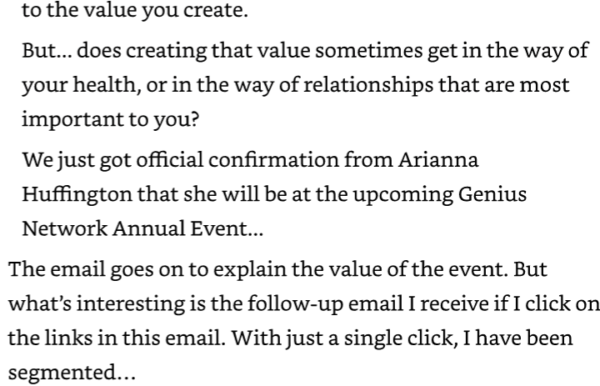Reading Notes for:


The process of converting a normal everyday civilian into a customer is not 1 or 2 steps. It is a process. You must get their attention. It all starts with attention. Nobody has ever bought something from someone (or company) that they didn’t know existed.
There is a definable process to cultivating these customers. To be able to convert someone from going-about-their-life into wanting-to-do-business-with-you will require you to build an Invisible Selling Machine.
Lead Magnets are used to generate brand new leads, but they’re also used to move existing leads from the Segmentation Phase of the Invisible Selling Machine into the Value Loop created by the Engagement and Ascension Phases. And the better your Lead Magnet, the more leads you’ll have in your Engagement and Ascension Series. (And remember…that’s where the money is made.)
We’re going to look at 9 different types of Lead Magnets in this section and review a checklist you’ll use to create Lead Magnets that perform well in your Invisible Selling Machine.
In fact, a long and complex Lead Magnet will likely convert poorly. You simply need to solve a specific problem with a solution for a specific segment of your market.
Here’s the key: Your Lead Magnet must be consumed by the prospect for it to have an impact. The perfect Lead Magnet will offer tremendous value within 5 minutes of the opt in. This is a “rule of thumb”, of course, but we don’t recommend, for example, a mini-course delivered over 14 days or a 300-page eBook as a Lead Magnet. These Lead Magnets take too long to consume and are unlikely to be specific.
Types of Lead Magnets
1 – Case Studies A case study is my favorite type of Lead Magnet because it’s a naturally specific type of content. Case Studies also fit easily into a number of the other criteria we’ll cover later in the Lead Magnet Checklist.
This video is a simple screencast using software like Camtasia or Screenflow that we used to deliver a case study at Digital Marketer.
This first video delivered the first part of the case study and made a pitch to receive the second part if an email address is entered
2 – Guide/Report
Reports and Guides are amongst the most common types of Lead Magnets. If you use a Lead Magnet of this type—be careful. You could easily violate the specificity rule. Here’s an example Free Report Lead Magnet opt in from my friend Joe Polish at Piranha Marketing.


Notice that Joe isn’t promising to change your life or make all your wildest dreams come true. He’s simply showing you a 7-step process for writing a successful ad…something he knows will appeal to his target market.
3 – Cheat Sheet/Handout
Cheat sheets and handouts make excellent Lead Magnets. They have a different “feel” to them than Reports or Guides, because they are generally very short (one page or so) and cut straight to an ultra-specific point. You can deliver these as checklists, mind maps or “blueprints.”
